An important supporting herb in medicinal formulas, calendula helps boost the immune system, detoxify the liver, clarify the skin, and much more. Read on to learn about all the benefits of calendula.
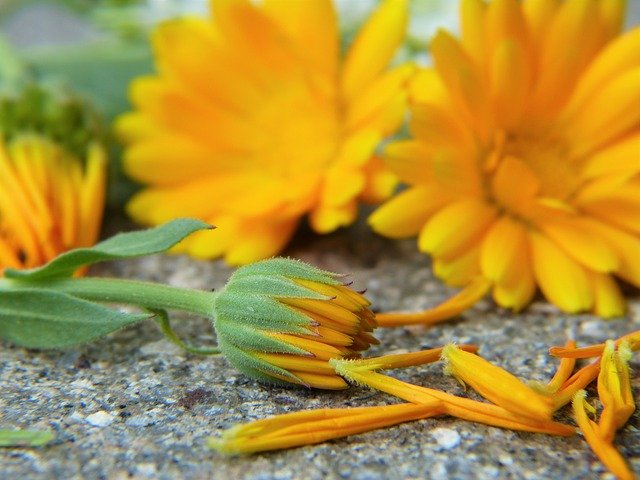
Image by silviarita from Pixabay
Calendula: The 411
- Botanical Name: Calendula officinalis
- Family: Asteraceae
- Other Common Names: Marigold, garden marigold, pot marigold, poet’s marigold, gold, English marigold
- Parts Used: Flowers, flower buds, leaves
- Energetics: Dry
- Thermal Properties: Warm
- Actions: Anti-inflammatory, antimicrobial, antispasmodic, astringent, bitter, emmenagogue, hepatic, immune modulating, styptic, vulnerary
- Taste: Pungent, bitter
- Plant Uses: Numerous skin issues and injuries, ulcers, leaky gut, indigestion, female health issues, detoxification, swollen lymph nodes, cancer fighter, radiation protection, food
- Plant Preparations: Infusion, poultice, tincture, lotion, salve, powder, hair rinse, numerous beauty products
- Toxicities/Warnings: Calendula is usually very safe. Pregnant mothers should consult a doctor before taking calendula internally. Calendula has properties that can encourage uterine contractions. Calendula may interact with some medications to cause drowsiness. In rare cases, people may have allergic reactions to calendula.
Introduction to Calendula
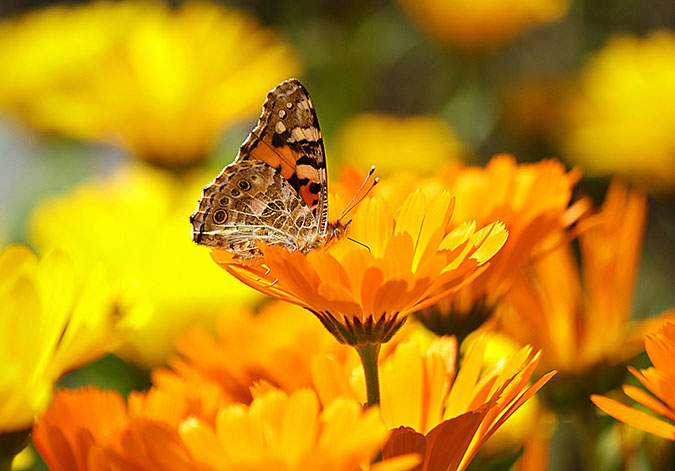
Image by Vikramjit Kakati from Pixabay
Calendula is a profuse bloomer with dozens of cultivars. It’s a popular ornamental plant that is currently grown all across the world. Ancient cultures enjoyed calendula’s decorative qualities as well, but they also knew calendula as more than an ornamental. It was prized as a food and medicine.
Historical Uses
The ancient Egyptians valued the plant for its rejuvenative abilities. In Europe, the plant was used medicinally starting in the 11th or 12th century (or possibly earlier). As the black plague spread across Europe, it was included as part of an anti-plague recipe. During the American Civil War, calendula was used to treat open wounds and stop bleeding.
You May Also Enjoy:
“7 Ways to Use Pine Trees for Food and Medicine, Year-round”
During the Middle Ages, calendula was called the poor man’s saffron. Its leaves and petals were used in cooking—to flavor soups and stews and as an ingredient in bread. The petals were also used to create syrups.
Beauty Treatments
Calendula also has a history of decorative uses. It is used in wreaths, flower arrangements (fresh and dried), and in potpourri. Hindus used the flower to decorate temples, and continue to do so. Calendula has even been used as a perfume ingredient.
The flowers can be used as a dye for clothing and food. They have been fed to chickens to darken egg yolks, and to livestock to create deeper orange cheese.
What’s in a Name?
The name “calendula” comes from a Latin word meaning “the first day of the month.” It’s the word from which we derive our word “calendar.” The name is in reference to calendula’s ability to bloom in every month of the year, in warm climates.
Reportedly, the common name “marigold” comes from early Christians naming the plant after the Virgin Mary. It was “Mary’s Gold,” which was eventually shortened to “marigold.” The Calendula genus “marigold” is often confused with the identically named marigold of the Tagetes genus. The Tagetes marigold is another popular ornamental flower. However, these are two different plants and cannot be used interchangeably. Be sure that you have correctly identified your marigold before using it.
11 Benefits of Calendula
- Beauty Enhancer: Use calendula for a youthful, healthy appearance.
- Skin Superstar: Heal burns, cuts, bites, rashes, athlete’s foot, and more.1)Chandran, Preethi K., and Ramadasan Kuttan. “Effect of Calendula Officinalis Flower Extract on Acute Phase Proteins, Antioxidant Defense Mechanism and Granuloma Formation During Thermal Burns.” Journal of Clinical Biochemistry and Nutrition43, no. 2 (2008): 58-64. doi:10.3164/jcbn.2008043.2)”Herbal Oil: Calendula Oil Benefits and Uses.” Mercola.com. Accessed July 29, 2019. https://articles.mercola.com/herbal-oils/calendula-oil.aspx.
- Wound Healer: Accelerate wound healing and minimize scarring.3)Forêt, Rosalee De La. “Calendula.” HerbMentor. Accessed July 29, 2019. https://herbmentor.learningherbs.com/herb/calendula/.
- Digestive Aid: Soothe cramping and indigestion. Control leaky gut.4)Bashir, Samra, Khalid H. Janbaz, Qaiser Jabeen, and Anwar H. Gilani. “Studies on Spasmogenic and Spasmolytic Activities OfCalendula Officinalisflowers.” Phytotherapy Research20, no. 10 (2006): 906-10. doi:10.1002/ptr.1980.5)Forêt, Rosalee De La. “Calendula.” HerbMentor. Accessed July 29, 2019. https://herbmentor.learningherbs.com/herb/calendula/.
- Lymph Mover: Unblock swollen lymph nodes and boost your immune system.6)”These Vibrant Golden Flowers Posses Many Benefits.” Mercola.com. Accessed July 29, 2019. https://articles.mercola.com/herbs-spices/marigold.aspx.
- Women’s Health: Normalize your menstrual cycle. Minimize pain and discomfort.7)Levy, Jillian. “The Flower That Fights Ear Infections, Jock Itch, PMS, Diaper Rash So Much More.” Dr. Axe. June 19, 2017. Accessed July 29, 2019. https://draxe.com/nutrition/herbs/marigolds/.8)Hoffmann, David. Medical Herbalism: The Science and Practice of Herbal Medicine. Rochester, VT: Healing Arts Press, 2003.
- Traditional Food: Wow your friends with this “exotic” food.
- Anti-Cancer: Fight back against melanoma, leukemia, and colon cancer.9)Ukiya, Motohiko, Toshihiro Akihisa, Ken Yasukawa, Harukuni Tokuda, Takashi Suzuki, and Yumiko Kimura. “Anti-Inflammatory, Anti-Tumor-Promoting, and Cytotoxic Activities of Constituents of Marigold (Calendulaofficinalis) Flowers.” Journal of Natural Products69, no. 12 (2006): 1692-696. doi:10.1021/np068016b.
- Radiation Protection: Reduce side effects of radiation exposure better than prescription drugs.10)Pommier, P., F. Gomez, M.p. Sunyach, A. Dhombres, C. Carrie, and X. Montbarbon. “Phase III Randomized Trial Of Calendula Officinalis Compared With Trolamine for the Prevention of Acute Dermatitis During Irradiation for Breast Cancer.” Journal of Clinical Oncology22, no. 8 (2004): 1447-453. doi:10.1200/jco.2004.07.063.
- Detoxifying Liver Cleanser: Clear out impurities and support your liver.11)”These Vibrant Golden Flowers Possess Many Benefits.” Mercola.com. Accessed July 29, 2019. https://articles.mercola.com/herbs-spices/marigold.aspx.12)Forêt, Rosalee De La. “Calendula.” HerbMentor. Accessed July 29, 2019. https://herbmentor.learningherbs.com/herb/calendula/.
- Curb Appeal: Beautify your land with this beautiful, easy-to-grow flower.
Medicinal Properties of Calendula
Calendula is an herb that deserves a place in every medicine cabinet and healer’s kit. You’ll find it coming up again and again in herbal formulas. This is a testament to its usefulness.
The Grow Network offers a premium-quality Biodynamic Calendula Salve Kit in our TGN Store. Click here to add calendula salve to your home medicine kit!
An Important Supporting Role
To be clear, calendula’s popularity doesn’t come from it being the strongest herb in any one category. Rather, it has a number of potent, complementary properties that make it useful in a variety of formulas and situations. When calendula isn’t serving a primary roll, it will often still have a place as a supporting herb in formulas. Calendula is also used to coax out more potent effects from other herbs.
Wound Healing
Calendula and comfrey are often combined for accelerated wound healing.13)Bone, Kerry. Principles and Practice of Phytotherapy Modern Herbal Medicine. London: Elsevier Churchill Livingstone, 2013. Use calendula with peppermint for indigestion, or with blackberry root to control diarrhea.14)Gladstar, Rosemary. Rosemary Gladstars Medicinal Herbs: A Beginners Guide. North Adams, MA: Storey Publishing, 2012. Echinacea and calendula work together for increased immune-boosting power.15)”The Many Benefits of Calendula Officinalis (Marigold).” GreenMedInfo. July 03, 2015. Accessed July 29, 2019. https://www.greenmedinfo.com/blog/many-benefits-calendula-officinalis-marigold. Blackberry root and calendula root are often combined to treat diarrhea.16)Gladstar, Rosemary. Rosemary Gladstars Medicinal Herbs: A Beginners Guide. North Adams, MA: Storey Publishing, 2012. When mixed with garlic, mullein, and St. John’s wort, calendula was as effective as anaesthetic ear drops, and more effective than antibiotics, at relieving ear pain.17)Sarrell, E. Michael, Avigdor Mandelberg, and Herman Avner Cohen. “Efficacy of Naturopathic Extracts in the Management of Ear Pain Associated With Acute Otitis Media.” Archives of Pediatrics & Adolescent Medicine155, no. 7 (2001): 796. doi:10.1001/archpedi.155.7.796.18)Sarrell, E. M., H. A. Cohen, and E. Kahan. “Naturopathic Treatment for Ear Pain in Children.” Pediatrics111, no. 5 (2003). doi:10.1542/peds.111.5.e574.
You May Also Enjoy:
Calendula can bring down the inflammation of an irritation or injury, helping to reduce pain and swelling.19)Jones, Patrick P. The Homegrown Herbalist. Place of Publication Not Identified: Publisher Not Identified, 2014. And its antimicrobial properties help to prevent infection as the wound heals.20)Gladstar, Rosemary. Rosemary Gladstars Herbal Recipes for Vibrant Health. Pownal, VT: Storey, 2009. Slow-healing wounds are particularly benefited by calendula. It has the ability to speed up wound healing and minimize scarring.21)Rothkranz, Markus. Free Food and Medicine: Edible Plants Guide. United States: Rothkranz Publishing, 2012.22)Forêt, Rosalee De La. “Calendula.” HerbMentor. Accessed July 29, 2019. https://herbmentor.learningherbs.com/herb/calendula/. Healing times will vary by person and by injury, but one study found that calendula nearly tripled the healing speed of participants.23)Duran, V., M. Matic, M. Jovanovć, N. Mimica, Z. Gajinov, M. Poljacki, and P. Boza. “Results of the Clinical Examination of an Ointment with Marigold (Calendula Officinalis) Extract in the Treatment of Venous Leg Ulcers.” International Journal of Tissue Reactions27, no. 3 (2005): 101-06. Accessed July 29, 2019.
Skin Health
Calendula seems to have an affinity for the skin, and has most commonly been used for this area of health. It can be used internally and externally for a variety of skin conditions. Rashes, bites, stings, burns, cuts, scrapes, bruises, rashes, and acne all typically respond well to calendula.
Our DIY Calendula Salve Kit is easy to make, and even easier to use! Click here for details.
Beauty Applications
Let us not overlook beauty applications. A great number of natural beauty products include calendula for its rejuvenating and skin-supporting properties. It can be found in face creams, lotions, soaps and shampoos, toners, bubble baths, and anything else you can imagine. It helps to moisturize and nourish skin. It repairs damage and helps to clear the complexion to maintain skin’s youthful appearance.24)Chevallier, Andrew. DK Encyclopedia of Herbal Medicine. New York: DK Pub., 2000. A calendula rinse is also beneficial for hair and stops multiple types of dandruff.25)v In addition, calendula can be used to reduce the incidence of varicose veins and to heal venous leg ulcers.26)Buzzi, M., F. De Freitas, and M. De Barros Winter. “Therapeutic Effectiveness of a Calendula Officinalis Extract in Venous Leg Ulcer Healing.” Journal of Wound Care25, no. 12 (2016): 732-39. doi:10.12968/jowc.2016.25.12.732.
Burn Treatment
It can be used on sunburns, radiation burns, and thermal burns. One study even found it to be superior to a prescription treatment for radiation-induced dermatitis.27)Pommier, P., F. Gomez, M.p. Sunyach, A. Dhombres, C. Carrie, and X. Montbarbon. “Phase III Randomized Trial Of Calendula Officinalis Compared With Trolamine for the Prevention of Acute Dermatitis During Irradiation for Breast Cancer.” Journal of Clinical Oncology22, no. 8 (2004): 1447-453. doi:10.1200/jco.2004.07.063.
Antifungal Properties
The sticky resin on the flowers contains antifungal compounds. Calendula is often used in creams and ointments to treat fungal skin infections such as ringworm, athlete’s foot, rashes, and jock itch.28)”Herbal Oil: Calendula Oil Benefits and Uses.” Mercola.com. Accessed July 29, 2019. https://articles.mercola.com/herbal-oils/calendula-oil.aspx.
You May Also Enjoy:
“Severe Leg Wound and Sepsis Healing in a Dog”
“From Skydiving Accident to Mystery Infection: A Question from Nan B.”
And because it is so delicate and safe to use, calendula can be used on the most sensitive skin. Nursing mothers often use calendula-based creams to soothe sore nipples and diaper rash. Calendula infusions can even be used as an eyewash.29)”These Vibrant Golden Flowers Posses Many Benefits.” Mercola.com. Accessed July 29, 2019. https://articles.mercola.com/herbs-spices/marigold.aspx.
Digestive Benefits
Another major area of use for calendula is the digestive system, where it once again has multiple uses. Calendula tea can be used as a mouthwash to reduce plaque, soothe a sore throat, and heal mouth sores.30)Johnson, Rebecca L., Steven Foster, and Andrew Weil. National Geographic Guide to Medicinal Herbs: The Worlds Most Effective Healing Plants. Washington, D.C.: National Geographic, 2014. Further down the GI tract, it’s helpful in dealing with leaky gut. Calendula’s antifungal properties help to control candida overgrowth, and its wound-healing and anti-inflammatory properties assist in closing gaps and repairing damage.31)Forêt, Rosalee De La. “Calendula.” HerbMentor. Accessed July 29, 2019. https://herbmentor.learningherbs.com/herb/calendula/.
Calendula can be used for ulcers, abdominal cramps, and indigestion.32)Bashir, Samra, Khalid H. Janbaz, Qaiser Jabeen, and Anwar H. Gilani. “Studies on Spasmogenic and Spasmolytic Activities OfCalendula Officinalisflowers.” Phytotherapy Research20, no. 10 (2006): 906-10. doi:10.1002/ptr.1980. It also assists detoxification by stimulating and supporting the liver.33)Forêt, Rosalee De La. “Calendula.” HerbMentor. Accessed July 29, 2019. https://herbmentor.learningherbs.com/herb/calendula/.
Reproductive Support
Women can use calendula as an herb for the reproductive system. Calendula helps to facilitate proper menstrual processes with minimal cramping and pain.34)Hoffmann, David. Medical Herbalism: The Science and Practice of Herbal Medicine. Rochester, VT: Healing Arts Press, 2003. It’s mildly estrogenic, which likely contributes to this effect.
Immune Booster
Let us now turn to the immune system and disease. Calendula is a lymph mover, which helps with immunity and with unblocking swollen lymph nodes.35)”These Vibrant Golden Flowers Posses Many Benefits.” Mercola.com. Accessed July 29, 2019. https://articles.mercola.com/herbs-spices/marigold.aspx. Calendula also shows anticancer activity, with the greatest effect against leukemia, colon cancer, and melanoma.36)Ukiya, Motohiko, Toshihiro Akihisa, Ken Yasukawa, Harukuni Tokuda, Takashi Suzuki, and Yumiko Kimura. “Anti-Inflammatory, Anti-Tumor-Promoting, and Cytotoxic Activities of Constituents of Marigold (Calendulaofficinalis) Flowers.” Journal of Natural Products69, no. 12 (2006): 1692-696. doi:10.1021/np068016b. Lastly, calendula may one day be part of an HIV treatment protocol. One study found that it caused an 85% inactivation of HIV-1 reverse transcriptase, making the virus relatively inactive for a significant period of time.37)Kalvatchev, Z., R. Walder, and D. Garzaro. “Anti-HIV Activity of Extracts from Calendula Officinalis Flowers.” Biomedicine & Pharmacotherapy51, no. 4 (1997): 176-80. doi:10.1016/s0753-3322(97)85587-4. More research is needed, however, before this can be made into an actual treatment.
Nutrition Properties
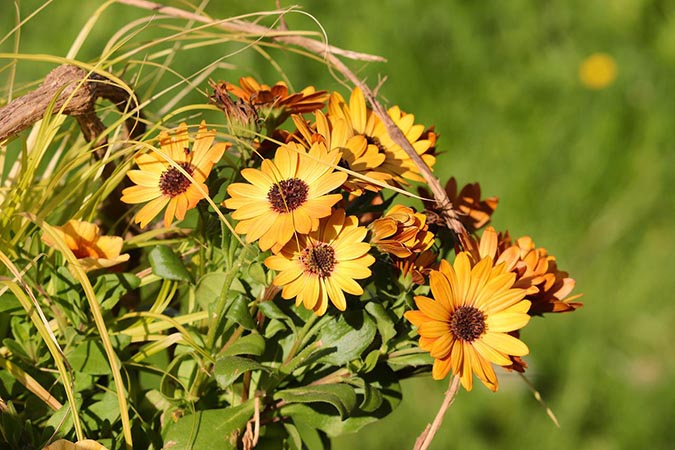
Image by Manfred Richter from Pixabay
Full nutritional information on calendula is not available. However, we know that the blooms are high in antioxidants, including flavonoids and carotenoids. The leaves contain lutein and beta-carotene.38)Busch, Sandi. “The Benefits of Calendula.” Healthy Eating | SF Gate. June 11, 2018. Accessed July 29, 2019. https://healthyeating.sfgate.com/benefits-calendula-8187.html.
Preparation and Usage
Poultice
Crush the blooms with water to make a paste. Buying or making powdered calendula ahead of time will save you a lot of effort here. Apply the paste thickly to the affected area and hold it in place with a wrapping for several hours. Try a calendula poultice to soothe chicken pox and measles symptoms.
You May Also Enjoy:
“5 Dehydrator Recipes for Home Grown Fruits and Vegetables”
“Making and Using a Poultice … Even On Hard-To-Treat Areas!”
Infused Oil
Place the desired amount of calendula flowers in a jar and cover them with oil. Let the oil cover the flowers by an inch or 2. Some popular choices for oil are olive, coconut, and jojoba. Place the jar in a paper bag to protect it from direct sun exposure. Then place it in a sunny windowsill to infuse for 2 weeks. Filter out the plant material and rebottle the oil.
Infuse mullein, St. John’s wort, and garlic with your calendula to create ear drops. Administer 2 drops in each ear, 3–4 times a day during the course of an ear infection, and for a few days after symptoms disappear. Do not used with a perforated eardrum.
Infusion
Pour 1 cup of boiling water over 1–2 tsp. powdered flowers. Cover and steep until cool enough to drink. Drinking 3 cups a day will help most people with most conditions. However, calendula is safe enough that you can drink more as needed.
The infusion can also be used as a mouthwash or gargle, or as a wash for the body. To use it as a wash, pour it over the affected area, or soak a cloth in the infusion and lay it over the desired area. It can also be used as an eyewash for sore, tired eyes, and for eye infections.39)”These Vibrant Golden Flowers Posses Many Benefits.” Mercola.com. Accessed July 29, 2019. https://articles.mercola.com/herbs-spices/marigold.aspx.
You May Also Enjoy: “How to Make Herbal Infusions”
A calendula infusion can also be administered topically by spray bottle. This is a good option for kids or animals (or adults) who won’t sit still for other applications. The more frequent the spraying, the more effective it will be. The spray will remain potent in a refrigerator for around 3 days. For the subject’s comfort, a small quantity of spray can be left out at room temperature for one day. Discard any leftover room-temperature spray at the end of that day.
Tincture
Calendula’s resinous components are better drawn out at a slightly higher alcohol concentration than other common herbs. Use around 60% alcohol to create calendula tinctures. Place calendula flowers into a glass jar and pour alcohol over them until they are covered by an inch or 2. Close the lid and shake the jar well. Place the jar in a cool, dark place, such as a cabinet. Shake the jar each day for 2–4 weeks. Strain out the herbs and rebottle your tincture.
A commonly recommended dose is 1–4 ml, 3 times a day.
Cauliflower With Calendula Sauce
[Recipe adapted from https://articles.mercola.com/herbs-spices/marigold.aspx.]
- 1 medium cauliflower
- 1/4 c. butter
- 1/2 c. coconut flour
- 1/3 c. grated cheese
- 1-1/4 c. milk
- Petals from 6 calendula flowers
- Salt and pepper to taste
Break up the cauliflower into manageable florets. Steam them for 10–15 minutes, until cooked.
In a saucepan, melt the butter and add the flour. Stir them until they form a soft paste. Slowly add the milk while whisking. Reduce the heat to low and allow this to simmer until the sauce thickens (around 5–10 minutes). Add in the cheese. Remove from the heat and add the calendula petals. Set the cauliflower in a serving dish, and pour the sauce over it.
Calendula blooms can also be added to soups, stews, pudding, yogurt, and salads. When used as food, the petals are usually eaten, rather than the entire bloom. Calendula leaves can be added to salads and stews. Rosemary Gladstar recommends an omelet with steamed nettle, feta, and calendula blossoms.
Diaper Rash Powder
- 2 parts calendula flowers
- 2 parts slippery elm bark
- 1 part lavender blooms
- 1 part dry clay
Powder all ingredients finely. Combine them and mix. Place in a shaker and use as needed.
Pet Use
Calendula is safe to use internally and externally with dogs, cats, and horses.40)”Calendula.” Vca_corporate. Accessed July 29, 2019. https://vcahospitals.com/know-your-pet/calendula. It is commonly used on other mammals as well, and is sometimes used with birds. Consult a veterinarian before using calendula with more exotic animals.
Precaution and Contraindications
Calendula is a safe and gentle herb for most people. However, certain populations should use caution. Pregnant women should not ingest calendula without first consulting a medical professional. Topical use is considered safe by many herbalists, though others err on the side of caution.
Taking calendula internally is likely safe for nursing mothers. However, few studies have explored this. Calendula has traditionally been used internally with infants, but modern opinion on this topic is split. Consulting a medical professional is advised. Again, topical applications are usually considered safe.
Allergic reactions may also be possible for people with allergies to plants in the Asteraceae family. If you are allergic to chrysanthemums, daisies, or ragweed, use caution with your first exposures to calendula.
Calendula can interact with sedatives, including medication used during and after surgery. In these cases, it can cause excessive drowsiness. Avoid taking calendula before a surgical procedure.
Plant ID
Calendula is a member of the Aster family, as is the Tagetes genus marigold. You must be sure to correctly differentiate these two, as they cannot be used interchangeably. Depending on your climate, calendula can be either a summer annual, winter annual, or perennial plant. It grows between 8 inches to 2 feet (20 centimeters to 0.6 meters) tall, and can be covered with colorful blooms for almost its entire growing season.
Its flowers are bright yellow, orange, or a combination of these. Some cultivars have been bred to expand on this color pallet. As a member of the Aster family, calendula possesses composite flowers. The “petals” (ray flowers) have 2 small notches at the ends. The bloom is fragrant, resinous, and sticky. Notable bracts can be found behind the blooms.
The leaves are oblong to lanceolate, growing to 2–7 inches. They are also fragrant and resinous, and are hairy on both sides. Seeds are curved and bumpy, resembling a dried worm.
Where It Grows and Where to Find It
Calendula may be native to the Mediterranean region, but it can now be found in flower beds all over the world. It has escaped and naturalized, mostly in sporadic, localized areas. It’s a fairly forgiving plant, easy to grow, and tolerant of drought once established. However, it will appreciate extra watering during periods of extreme heat. Calendula is less tolerant of overwatering and can be vulnerable to mold.
You May Also Enjoy: “How to Fertilize Container Gardens”
Plant seeds after the last frost. Choose a sunny location. Keep the soil moist, but avoid overwatering. Once established, calendula will reseed readily.
How and When to Harvest
Calendula will bloom throughout its growing season, until it is killed by winter freezes or summer heat. In some places, it will bloom every day of the year. Blossoms can be harvested any time they are open, but are best when they feel resinous and make your hands slightly sticky. Frequent harvesting will encourage more blooming. Just leave enough for the plant to reseed itself.
Pinch blossoms to remove them. Be careful not to pull roughly. Calendula can be uprooted fairly easily.
The resinous nature of calendula can make it difficult to dry. Try picking flowers after the morning dew has evaporated. Forced airflow, or even a dehydrator, may be needed to completely dry them. If you store dried blooms in an airtight container, include a silica packet to absorb any residual moisture and prevent spoilage. Dried blooms can also be stored in a paper bag, in a dry area.
Calendula is a valuable plant ally, deserving of a place in our gardens and medicine cabinets. It’s easy to grow, easy to use, beautiful, and cheery, and it loves to be around people. What more could we ask for?
What Do You Think?
Have you ever used calendula as food or medicine? What was your experience with it? Let us know by leaving a comment below!
______________
This is an updated version of article that was originally published on March 23, 2020.
Psst! Our Lawyer Wants You to Read This Big, Bad Medical Disclaimer –> The contents of this article, made available via The Grow Network (TGN), are for informational purposes only and do not constitute medical advice; the content is not intended to be a substitute for professional medical advice, diagnosis, or treatment. Always seek the advice of a qualified health care provider with any questions you may have regarding a medical condition. If you think you may be suffering from any medical condition, you should seek immediate medical attention. You should never delay seeking medical advice, disregard medical advice, or discontinue medical treatment because of information provided by TGN. Reliance on any information provided by this article is solely at your own risk. And, of course, never eat a wild plant without first checking with a local expert.
The Grow Network is a participant in the Amazon Services LLC Associates Program, an affiliate program designed to provide a means for our team to earn fees for recommending our favorite products! We may earn a small commission, at no additional cost to you, should you purchase an item after clicking one of our links. Thanks for supporting TGN!

Scott Sexton is a TGN Trailblazer, a highly experimental gardener, an unrelenting weed-eater, and a largely non-profit herbalist (much to his wife’s chagrin). When Scott is not teaching foraging classes, testing out theories in the garden, or grazing in the forest, he can be found at his Facebook page, “A Forager’s Guide to the Zombie Apocalypse.”
References
| ↑1 | Chandran, Preethi K., and Ramadasan Kuttan. “Effect of Calendula Officinalis Flower Extract on Acute Phase Proteins, Antioxidant Defense Mechanism and Granuloma Formation During Thermal Burns.” Journal of Clinical Biochemistry and Nutrition43, no. 2 (2008): 58-64. doi:10.3164/jcbn.2008043. |
|---|---|
| ↑2, ↑28 | ”Herbal Oil: Calendula Oil Benefits and Uses.” Mercola.com. Accessed July 29, 2019. https://articles.mercola.com/herbal-oils/calendula-oil.aspx. |
| ↑3, ↑5, ↑12, ↑22, ↑31, ↑33 | Forêt, Rosalee De La. “Calendula.” HerbMentor. Accessed July 29, 2019. https://herbmentor.learningherbs.com/herb/calendula/. |
| ↑4, ↑32 | Bashir, Samra, Khalid H. Janbaz, Qaiser Jabeen, and Anwar H. Gilani. “Studies on Spasmogenic and Spasmolytic Activities OfCalendula Officinalisflowers.” Phytotherapy Research20, no. 10 (2006): 906-10. doi:10.1002/ptr.1980. |
| ↑6, ↑29, ↑35, ↑39 | ”These Vibrant Golden Flowers Posses Many Benefits.” Mercola.com. Accessed July 29, 2019. https://articles.mercola.com/herbs-spices/marigold.aspx. |
| ↑7 | Levy, Jillian. “The Flower That Fights Ear Infections, Jock Itch, PMS, Diaper Rash So Much More.” Dr. Axe. June 19, 2017. Accessed July 29, 2019. https://draxe.com/nutrition/herbs/marigolds/. |
| ↑8, ↑34 | Hoffmann, David. Medical Herbalism: The Science and Practice of Herbal Medicine. Rochester, VT: Healing Arts Press, 2003. |
| ↑9, ↑36 | Ukiya, Motohiko, Toshihiro Akihisa, Ken Yasukawa, Harukuni Tokuda, Takashi Suzuki, and Yumiko Kimura. “Anti-Inflammatory, Anti-Tumor-Promoting, and Cytotoxic Activities of Constituents of Marigold (Calendulaofficinalis) Flowers.” Journal of Natural Products69, no. 12 (2006): 1692-696. doi:10.1021/np068016b. |
| ↑10, ↑27 | Pommier, P., F. Gomez, M.p. Sunyach, A. Dhombres, C. Carrie, and X. Montbarbon. “Phase III Randomized Trial Of Calendula Officinalis Compared With Trolamine for the Prevention of Acute Dermatitis During Irradiation for Breast Cancer.” Journal of Clinical Oncology22, no. 8 (2004): 1447-453. doi:10.1200/jco.2004.07.063. |
| ↑11 | ”These Vibrant Golden Flowers Possess Many Benefits.” Mercola.com. Accessed July 29, 2019. https://articles.mercola.com/herbs-spices/marigold.aspx. |
| ↑13 | Bone, Kerry. Principles and Practice of Phytotherapy Modern Herbal Medicine. London: Elsevier Churchill Livingstone, 2013. |
| ↑14, ↑16 | Gladstar, Rosemary. Rosemary Gladstars Medicinal Herbs: A Beginners Guide. North Adams, MA: Storey Publishing, 2012. |
| ↑15 | ”The Many Benefits of Calendula Officinalis (Marigold).” GreenMedInfo. July 03, 2015. Accessed July 29, 2019. https://www.greenmedinfo.com/blog/many-benefits-calendula-officinalis-marigold. |
| ↑17 | Sarrell, E. Michael, Avigdor Mandelberg, and Herman Avner Cohen. “Efficacy of Naturopathic Extracts in the Management of Ear Pain Associated With Acute Otitis Media.” Archives of Pediatrics & Adolescent Medicine155, no. 7 (2001): 796. doi:10.1001/archpedi.155.7.796. |
| ↑18 | Sarrell, E. M., H. A. Cohen, and E. Kahan. “Naturopathic Treatment for Ear Pain in Children.” Pediatrics111, no. 5 (2003). doi:10.1542/peds.111.5.e574. |
| ↑19 | Jones, Patrick P. The Homegrown Herbalist. Place of Publication Not Identified: Publisher Not Identified, 2014. |
| ↑20 | Gladstar, Rosemary. Rosemary Gladstars Herbal Recipes for Vibrant Health. Pownal, VT: Storey, 2009. |
| ↑21 | Rothkranz, Markus. Free Food and Medicine: Edible Plants Guide. United States: Rothkranz Publishing, 2012. |
| ↑23 | Duran, V., M. Matic, M. Jovanovć, N. Mimica, Z. Gajinov, M. Poljacki, and P. Boza. “Results of the Clinical Examination of an Ointment with Marigold (Calendula Officinalis) Extract in the Treatment of Venous Leg Ulcers.” International Journal of Tissue Reactions27, no. 3 (2005): 101-06. Accessed July 29, 2019. |
| ↑24 | Chevallier, Andrew. DK Encyclopedia of Herbal Medicine. New York: DK Pub., 2000. |
| ↑25 | v |
| ↑26 | Buzzi, M., F. De Freitas, and M. De Barros Winter. “Therapeutic Effectiveness of a Calendula Officinalis Extract in Venous Leg Ulcer Healing.” Journal of Wound Care25, no. 12 (2016): 732-39. doi:10.12968/jowc.2016.25.12.732. |
| ↑30 | Johnson, Rebecca L., Steven Foster, and Andrew Weil. National Geographic Guide to Medicinal Herbs: The Worlds Most Effective Healing Plants. Washington, D.C.: National Geographic, 2014. |
| ↑37 | Kalvatchev, Z., R. Walder, and D. Garzaro. “Anti-HIV Activity of Extracts from Calendula Officinalis Flowers.” Biomedicine & Pharmacotherapy51, no. 4 (1997): 176-80. doi:10.1016/s0753-3322(97)85587-4. |
| ↑38 | Busch, Sandi. “The Benefits of Calendula.” Healthy Eating | SF Gate. June 11, 2018. Accessed July 29, 2019. https://healthyeating.sfgate.com/benefits-calendula-8187.html. |
| ↑40 | ”Calendula.” Vca_corporate. Accessed July 29, 2019. https://vcahospitals.com/know-your-pet/calendula. |
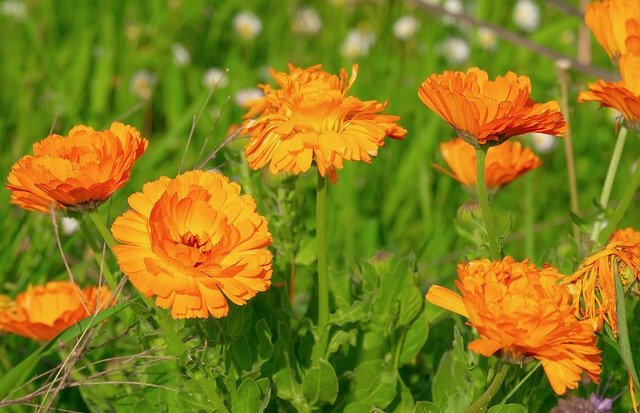
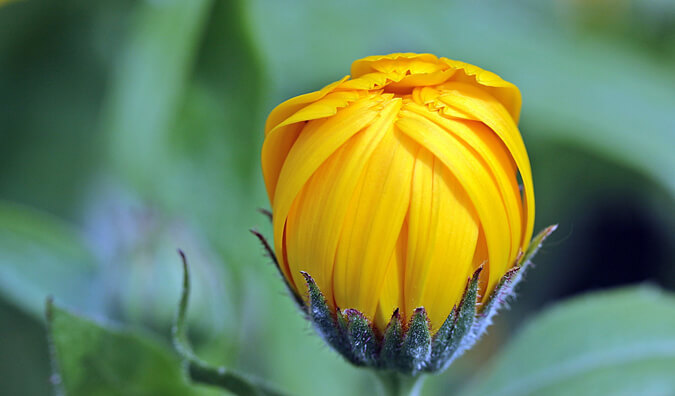
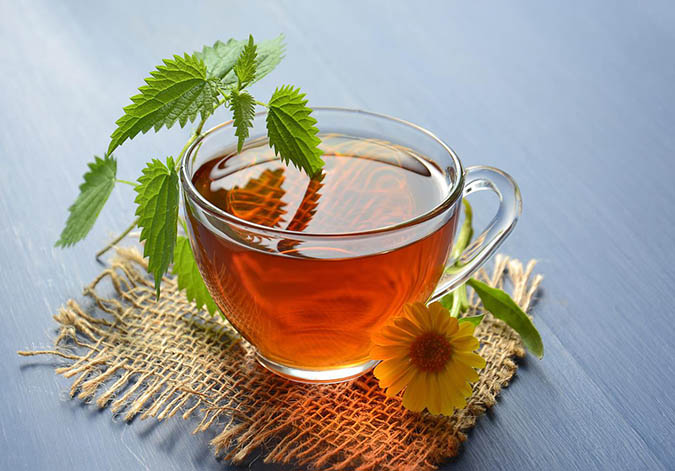
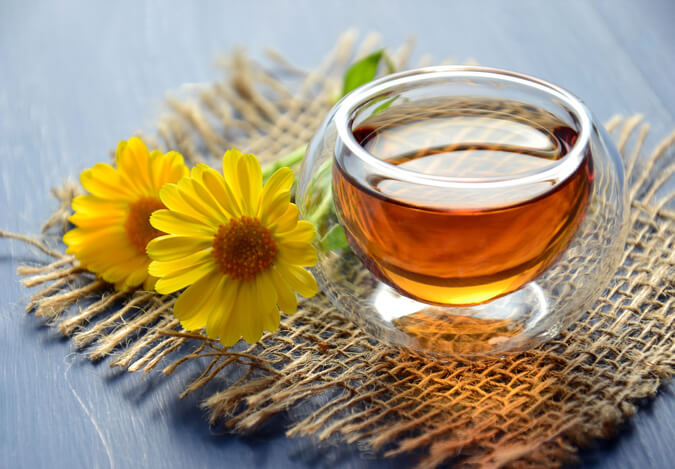
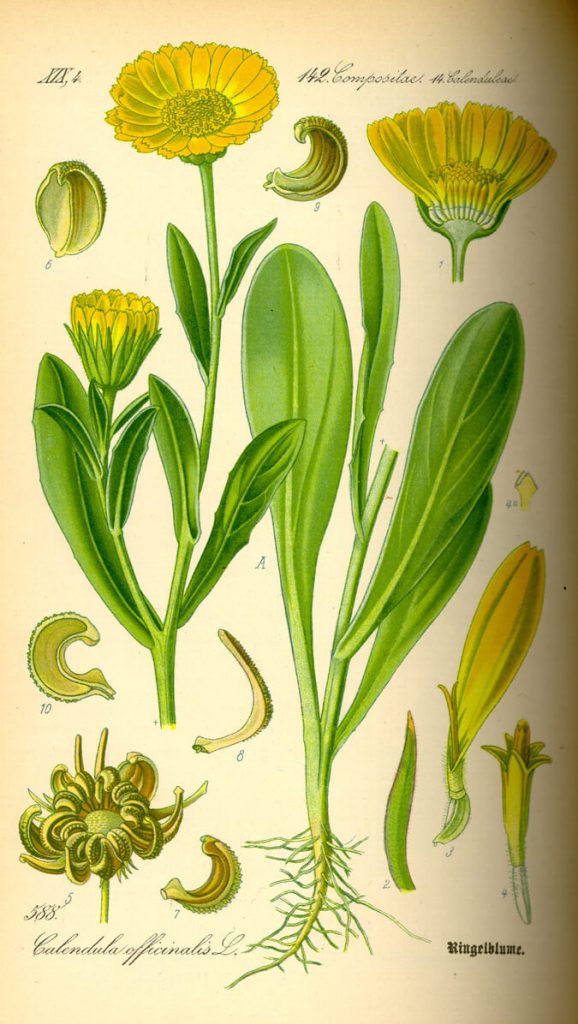
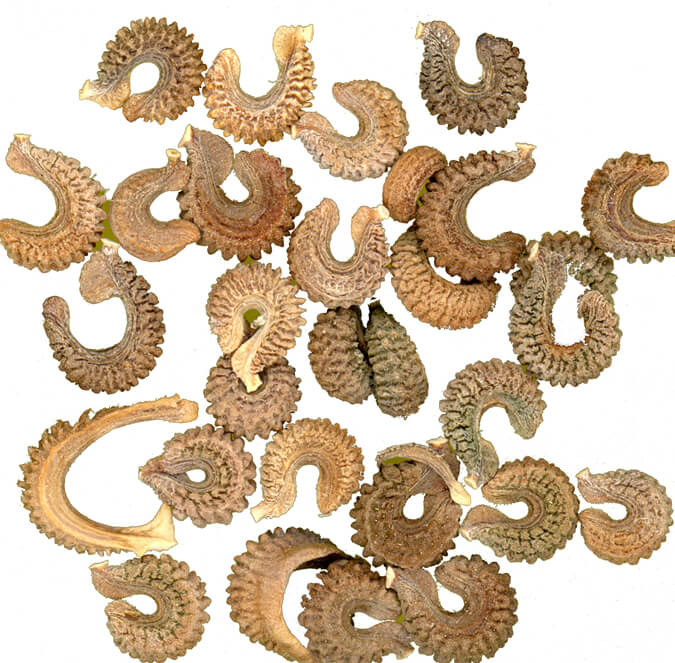







COMMENTS(4)
This was so informative and I am always up for trying a new recipe.
I volunteer at my local Farm2School program. I’ve also written a children’s vegetable cookbook so the recipe of cauliflower with calendula sauce is a perfect match for a school activity. Thank you for sharing and I’ll be sure to make it!
I learned recently that calendula kills H. Pylori. Maybe that’s how it heals leaky gut. I think that an infusion or tincture would be the way to take it for that.
Hi I’ve just discovered this article thanks to the newsletter. I wanted to see the lymph node info but unfortunately Mercola’s website is no longer live for old articles. Is it ok to assume a tea would be the way to help swollen lymph nodes? Rather than topical application of an oil on the nodes? I’ve never made a tincture and am not about to start. ?
Thanks
I knew about using calendula for skin, but really haven’t been aware of some of the other uses.